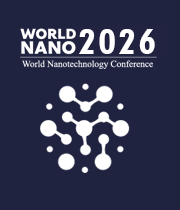Nanopatterning And Nanostructuring Of Surfaces
Nanopatterning and nanostructuring of surfaces is a process used to create nanoscale features on the surfaces of materials. This process is commonly used in nanotechnology to create nanoscale structures with sizes ranging from a few nanometers to several hundred nanometers. The process involves the use of various methods to pattern and structure the surface of a material, such as lithography, chemical etching, and physical deposition. By using these methods, it is possible to create nanoscale features with precise dimensions and shapes. Nanopatterning and nanostructuring of surfaces can be used to improve the performance of a variety of applications. For example, nanostructured surfaces can be used to create optical components with improved light-gathering capabilities, which can be used in medical imaging and optical communication systems. Additionally, nanostructured surfaces can be used to create anti-reflective coatings, which can reduce glare and improve the efficiency of solar cells. Furthermore, nanostructured surfaces can be used to create superhydrophobic surfaces, which can be used to repel water and other liquids, making them useful in applications such as water purification and oil spill cleanup. In addition to improving the performance of various applications, nanopatterning and nanostructuring of surfaces can also be used to modify the surface properties of materials. For example, by creating nanostructured surfaces, it is possible to change the wettability of a surface, making it hydrophilic or hydrophobic.

Harry Ruda
University of Toronto, Canada
Raman Singh
Monash University, Australia
Paulo Cesar De Morais
Catholic University of Brasilia, Brazil
Xiao Hong Nancy Xu
Old Dominion University, United States
S V A R Sastry
Harcourt Butler Technical University, India
Vinayak Adimule
Angadi Institute of Technology and Management, India



Title : 40,000 implants in humans and no failure: The impact of nanomedicine
Thomas J Webster, Hebei University of Technology, China
Title : Cellulose-derived biochar modified with iron oxide and ZnO nanoparticles by a novel one-step pyrolytic method for removal of emerging contaminants from water
Rashad Al Gaashani, Hamad Bin Khalifa University, Qatar
Title : Harnessing the unique properties of engineered nanostructures for sensing
Harry Ruda, University of Toronto, Canada
Title : Circumventing challenges in developing CVD graphene on steels for extraordinary and durable corrosion resistance
Raman Singh, Monash University, Australia
Title : Nano DAP augments productivity, phosphorus use efficiency, and profitability of spring wheat in India
Binaya Kumar Parida, Coromandel International Ltd, India
Title : Lipid nanoparticles formulations: From bench scale to industrial scale
Mohammad A Obeid, RAK Medical and Health Sciences University, United Arab Emirates